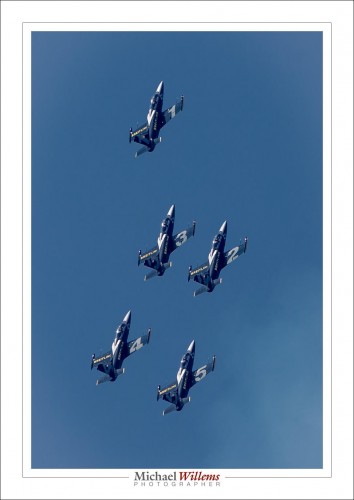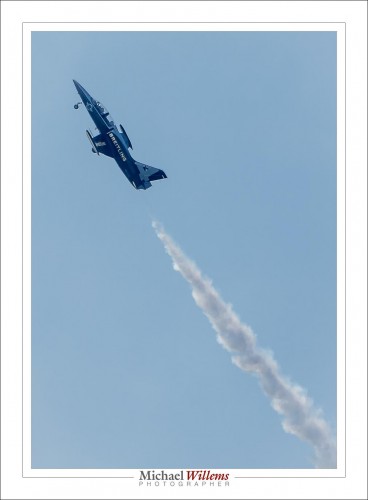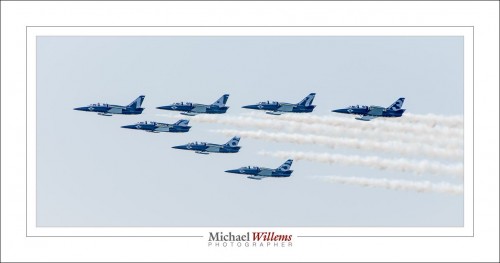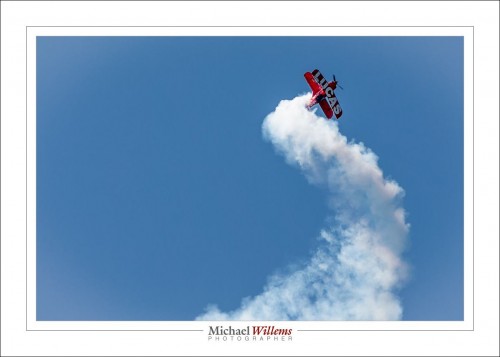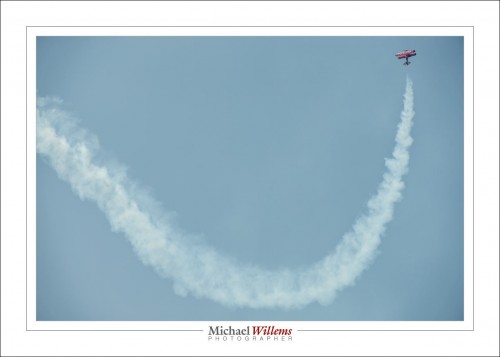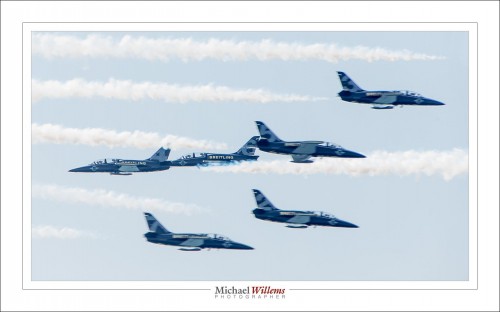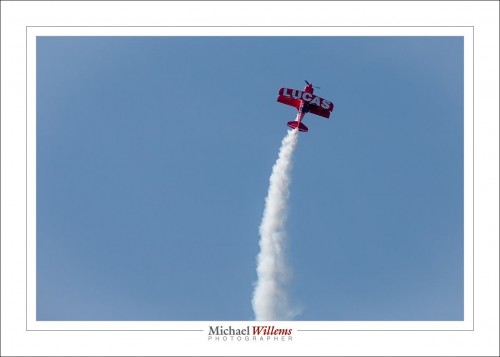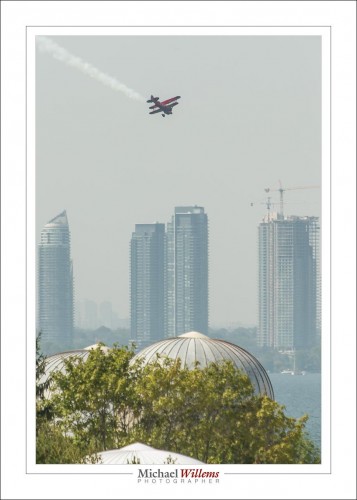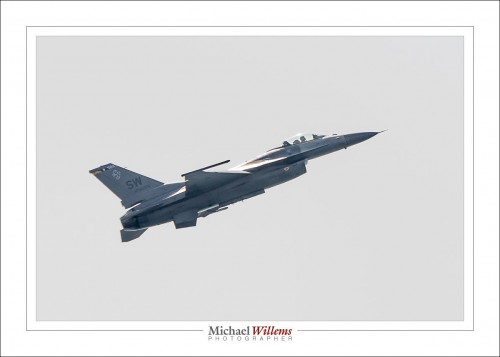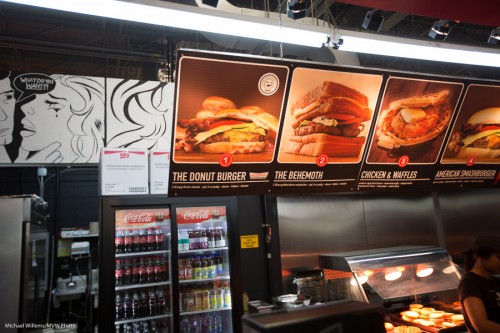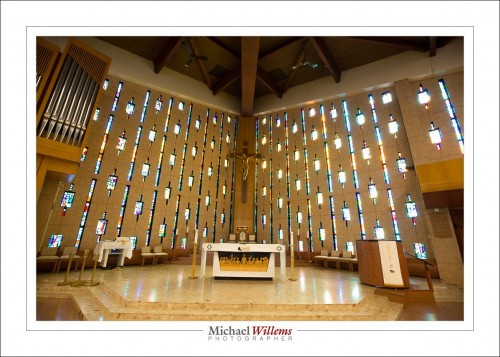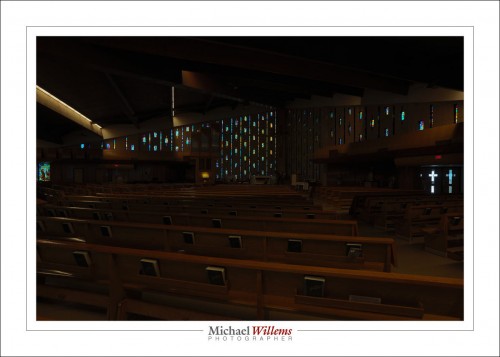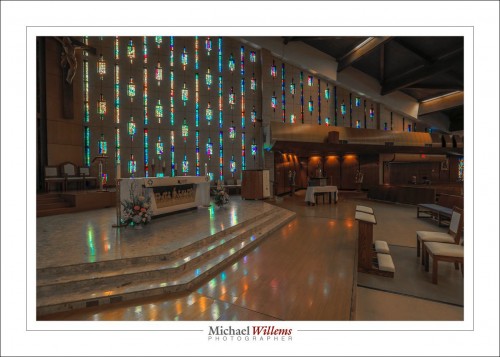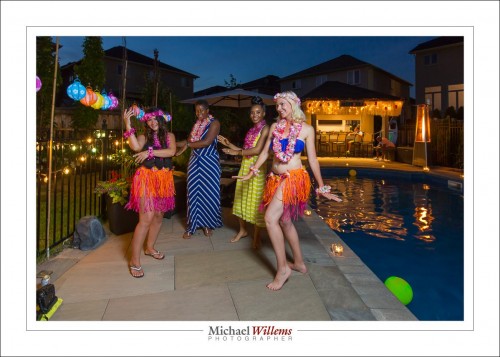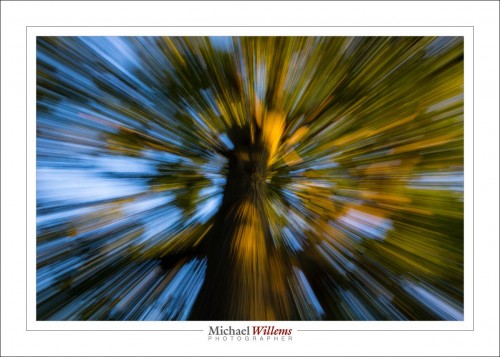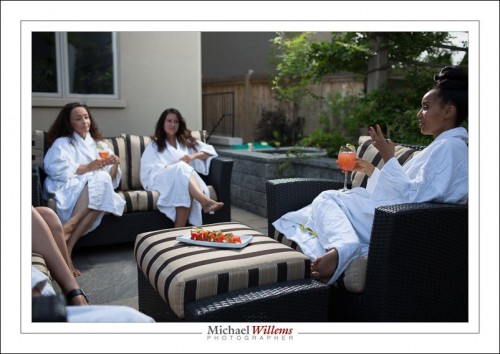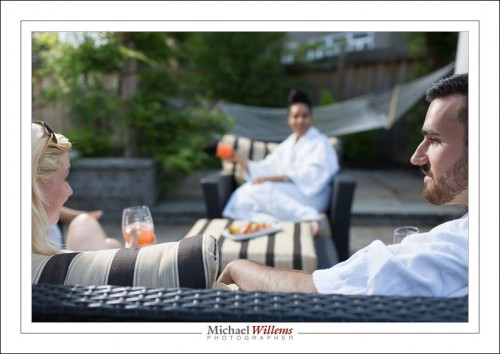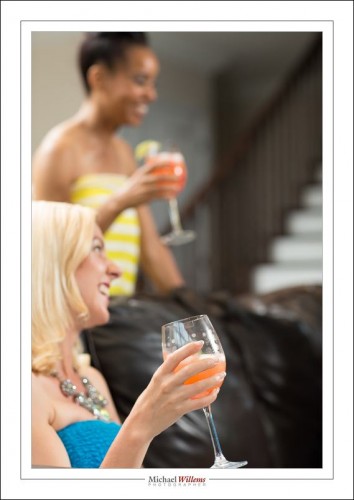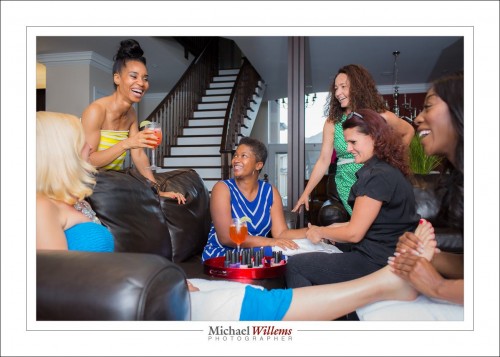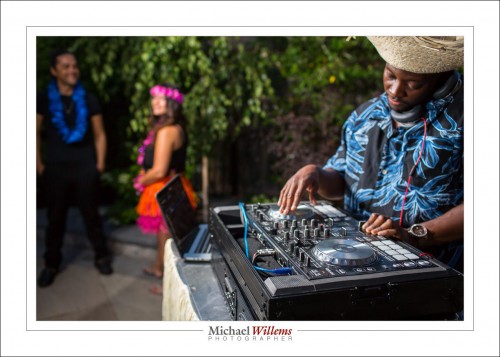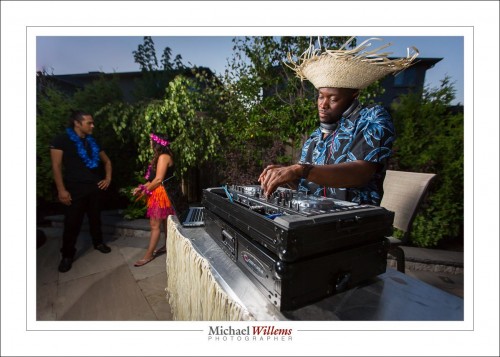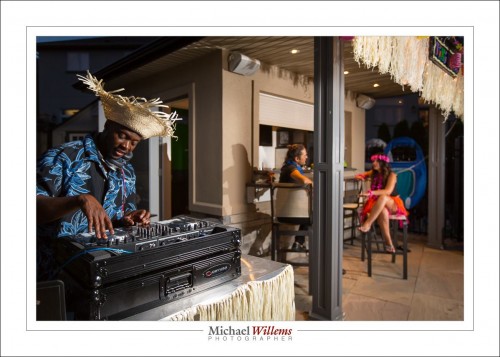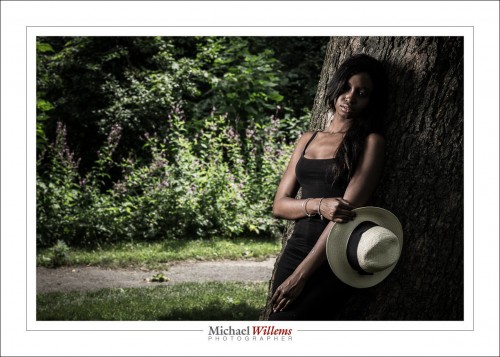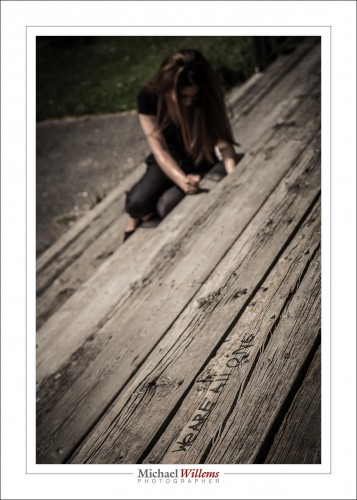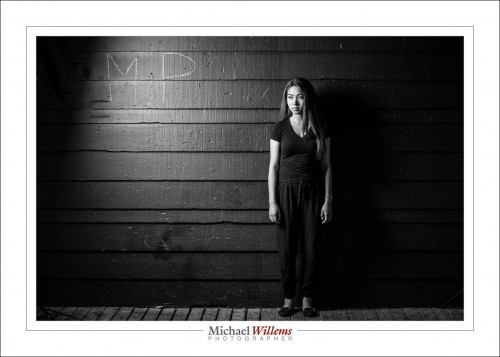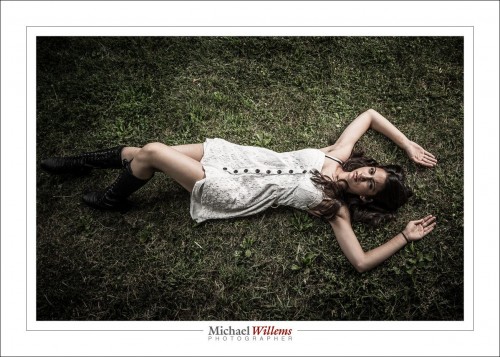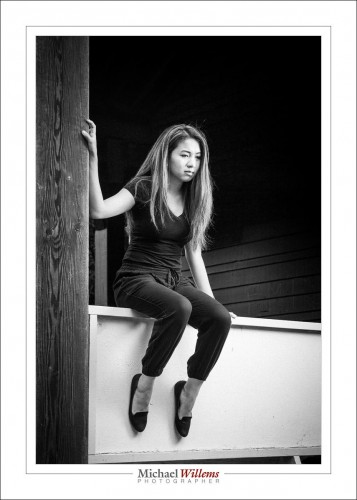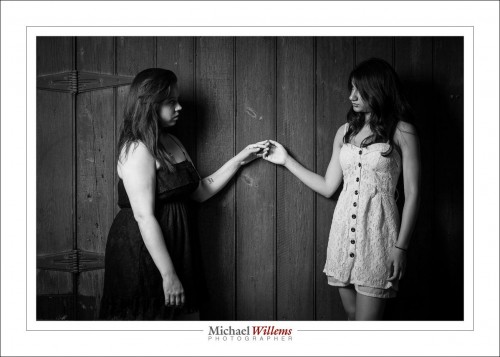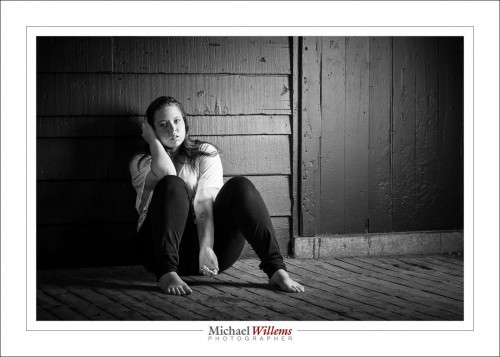Here’s a few shots from Monday’s Toronto airshow (view at full size for detail):
What did I use?
- A 1Dx camera, but the 7D would have worked as well, if not better (it’s a crop camera, unlike the 1Dx).
- A 70-200mm f/2.8 lens
- A Yongnuo 2x lens extender, making that lens an effective 140-400mm f/5.6 lens.
- My settings were: 400 ISO, 1/800 sec, f/7.1
Pretty much the same settings throughout the shoot. Watching, of course, for light changes.
Why those settings?
400 ISO to get a fast enough shutter speed. f/7.1 in case I get focus slightly wrong. 1/800 sec to freeze motion.
A few more:
You need to pan with the aircraft to keep them sharp. Set IS/VR to mode 2/active, if you have that option, and pan (move the lens with the object you are shooting).
Which way was I panning here?
A few last ones:
Only a little cropping was needed here, due to the tele-extender. The 7D crop body, as said, would probably have been even better (another 60% range!).

